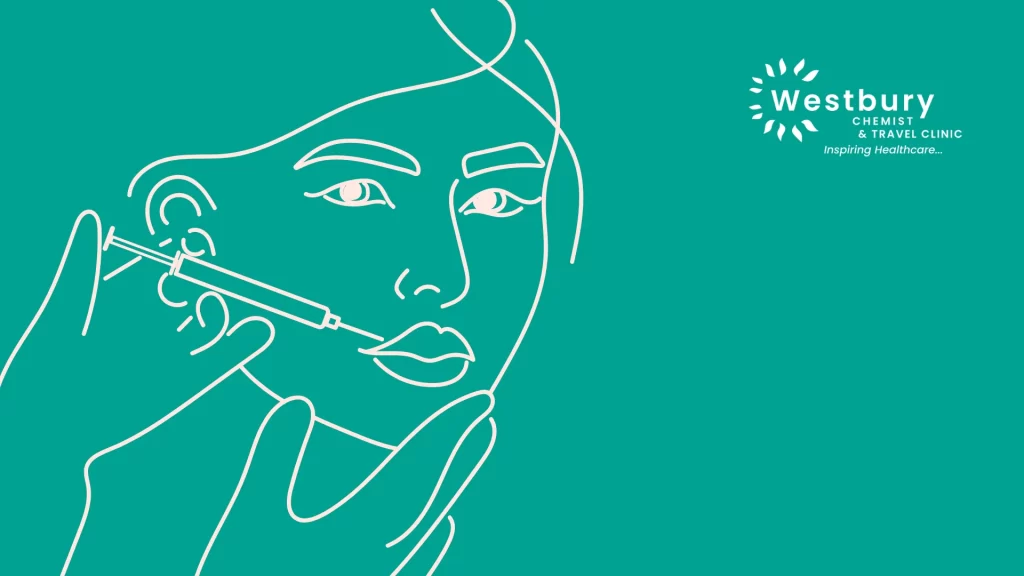- Aesthetics Clinic
- Can You Fly After Botox?
Can You Fly After Botox?

Scared of getting a funny face after your botox and a flight? So can you fly after botox?
If you’re planning on flying after getting botox treatment, you’ll want to know what to expect.
Botox is a popular cosmetic treatment that can make your skin look younger and fresher in just a few minutes.
It’s also used to treat wrinkles, excessive sweating and muscle spasms.
While botox can be a great way to turn back the clock on ageing, it’s important to know how it works so that there are no surprises when you fly after getting this drug injected into your face or body.
Table of Contents
What is Botox?
Botox is a neurotoxin that’s injected into muscles.
The toxin blocks signals from nerves to the muscles, so the muscles can’t contract and tighten. This causes temporary paralysis of the muscle and reduces wrinkles on your skin.
Botox is also used to treat migraine headaches, hyperhidrosis (sweating) and some bladder control problems that occur with multiple sclerosis or spinal cord injuries.
There are many side effects associated with Botox injections, but they usually go away after several days or weeks after treatment has been completed.
If you’re considering getting botox done, discussing all potential risks and benefits before proceeding with treatment is important.
Can Botox affect your ability to fly?
Can Botox, the popular wrinkle-reducing injection, affect your ability to fly?
Let’s answer the false claims about not being able to fly after your treatment.
The answer is yes, but only in minor ways. If you’re worried about your next flight affecting the efficacy of Botox, don’t stress it too much.
There are only very small changes happening to the protein structure.
It works by temporarily paralysing muscles in the treated area—it does not affect your brain or nervous system and will not impair your mental or physical capabilities.
In fact, it’s occasionally used as an alternative treatment for migraines because it can help relax the muscles in the head.
Because Botox doesn’t interact with other medications or impair motor skills in any way (except making you unable to move specific facial muscles temporarily), you don’t need to worry about taking an airplane after having had this procedure done!
How does flying affect Botox?
Can Botox, the popular wrinkle-reducing injection, affect your ability to fly?
Let’s answer the false claims about not being able to fly after your treatment.
The answer is yes, but only in minor ways. If you’re worried about your next flight affecting the efficacy of Botox, don’t stress it too much.
There are only very small changes happening to the protein structure.
It works by temporarily paralysing muscles in the treated area—it does not affect your brain or nervous system and will not impair your mental or physical capabilities.
In fact, it’s occasionally used as an alternative treatment for migraines because it can help relax the muscles in the head.
Because Botox doesn’t interact with other medications or impair motor skills in any way (except making you unable to move specific facial muscles temporarily), you don’t need to worry about taking an airplane after having had this procedure done!
Flying after Botox - what to consider.
Flying after Botox is a tricky subject.
If you are flying long distances, you can expect to be uncomfortable for the duration of the flight.
You should not fly for at least 24 hours after Botox injections, and if specific procedures are done because they will affect your forehead muscles (such as crow’s feet), you should not fly for 48 hours afterwards.
Flying will not affect the efficacy of Botox.
Botox is a protein that is injected into the skin to reduce wrinkles.
The treatment works by blocking nerve impulses to muscles, which in turn relaxes them and removes lines and wrinkles.
However, flying does not affect the efficacy of Botox as this neurotoxin works for only about three months after injections.
The Food and Drug Administration (FDA) has approved Botox for temporary treatment of moderate-to-severe forehead lines between eyebrows, crow’s feet, wrinkles at corners of eyes and horizontal forehead lines between the brows.
Key Take Aways
The bottom line is that Botox is a safe and effective treatment for many different conditions.
It also appears to be safe for flying after receiving treatment, as long as you follow some simple guidelines.
If you have questions about your situation, please consult with your doctor before making any travel decisions.

